Motivation
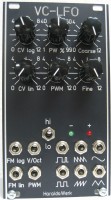
A voltage controlled LFO with multiple synced output waveforms is a very useful and versatile module. You can't have enough of them. They can add a lot to sounds, making them more animated. This one provides triangle, ramp up, ramp down pulse. square and sine wave output (-5V to +5V). The frequency range is easily adjusted to your needs from some minutes per cycle up to 40Hz. I started with the VC LFO design from Ray Wilson MFOS but changed the exponentiator and pulse adjust schematic completely. I have added a range switch and a linear FM input as well.
Specs and features
- Synced triangle, ramp up, ramp down, pulse, square and sine wave output
- Output -5V to +5V
- log and lin CV input
- Voltage controlled pulse width
- Range switch
- Coarse and fine frequency setting
- Runs on +/-15V and +/-12V
- Power consumption below 10mA each rail
Implementation
Schematic
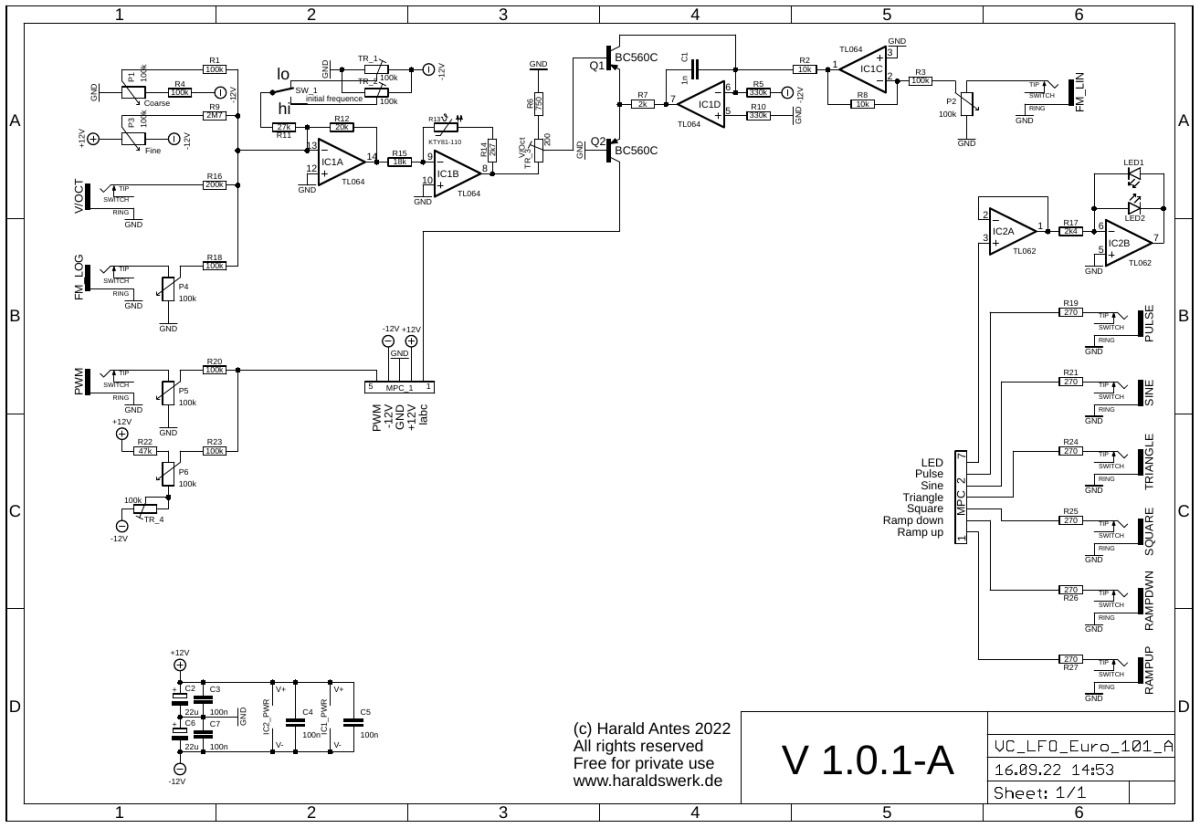
Voltage controlled LFO schematic: Control board
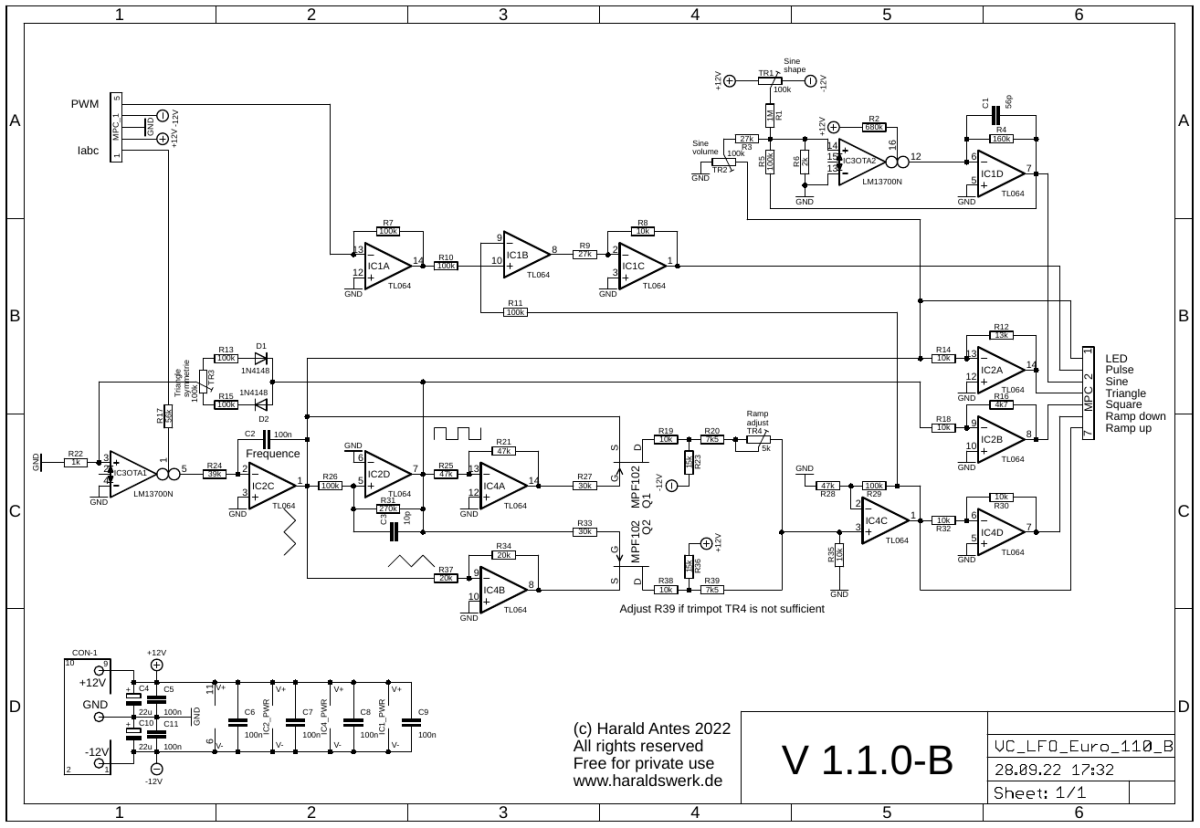
Voltage controlled LFO schematic: Main board
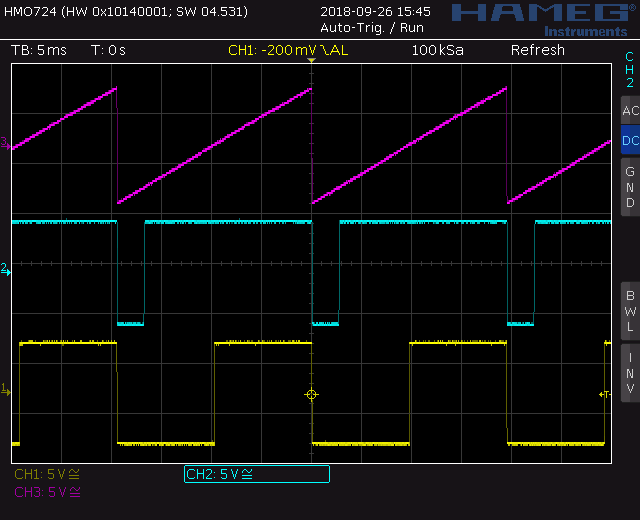
VC LFO screenshot waveform
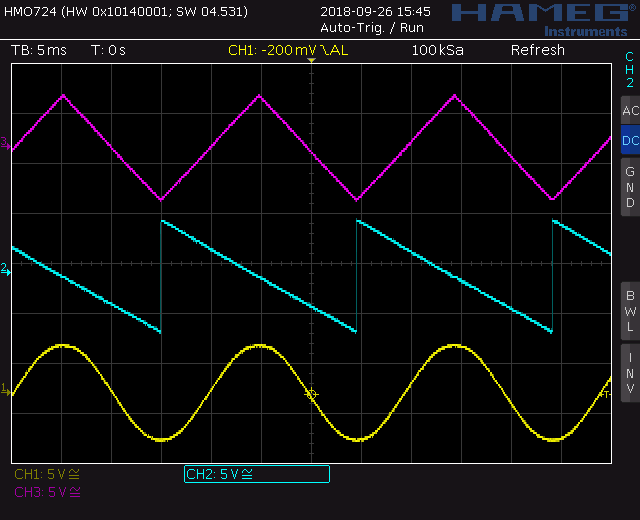
VC LFO screenshot waveform
Description:
T.b.d.
Calibration
First make a gross function test. All in and outs should work as expected and all potentiometer have some effect.
- Start with the triangle symmetry. Adjust symmetry with TR3 on the main board
- Ramp up/down. Look at the ramp output. Adjust TR4 on the main board so that the ramp wave is continuous. If TR4 does not allow you completely null the step (you can't go low enough or you can't go high enough) then adjust the value of R39 a few K up or down until TR4 gives you the range you need
- Pulse symmetry. Set the PW pot to the center point. Adjust TR_4 on the control board for the pulse output symmetry.
- Sine adjust. You have to experiment here a bit until you are satisfied. Adjust TR2 on the control board for the sine volume and TR1 for the sine shape. They are not independent. Trial and error helps. If you are not satisfied with the outcome you can experiment with changing R6, R3 and R1.
- log adjust. Set TR_3 on the control board so that a 1V voltage change at the V/Oct input causes a change of 17.3mV at the basis of Q1. Don't expect a close V/Oct characteristic. But it is not bad either.
- Initial frequency adjust. Set SW1 to hi. Adjust TR2 to about 10Hz. Set SW1 to lo. Adjust TR1 to 1Hz. This is only a starting point. You can set the initial frequency where ever you want. Hint: Build multiple LFO. You will need them.
Building hints
- Match transistor Q1 with Q2
Special parts
- None
Download
Voltage controlled LFO Euro control board documentation downloadVoltage controlled LFO Euro control board Gerber files download
Voltage controlled LFO Euro main board documentation download
Voltage controlled LFO Euro main board Gerber files download
Voltage controlled LFO Euro *.fpd file download